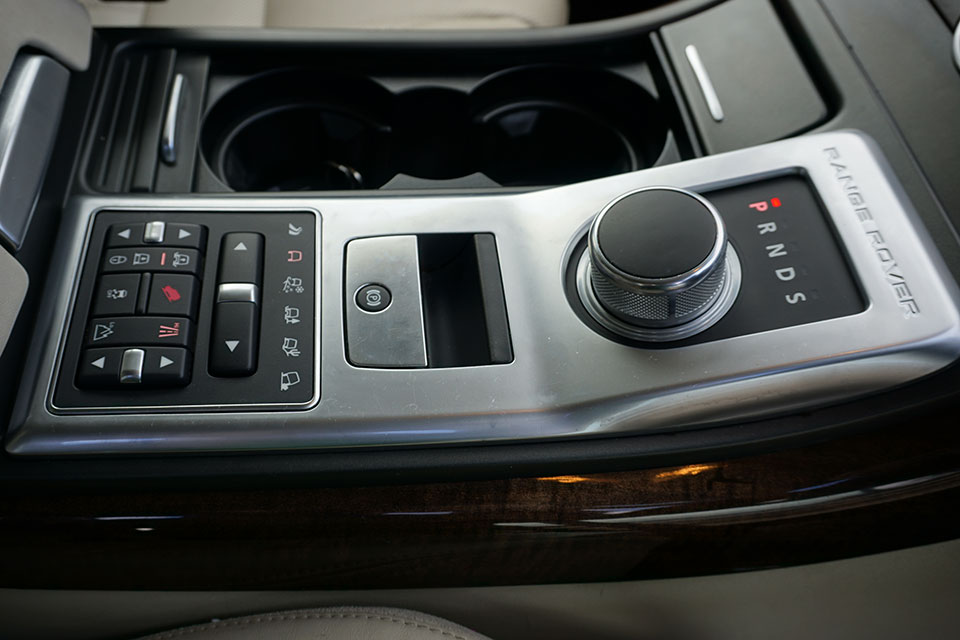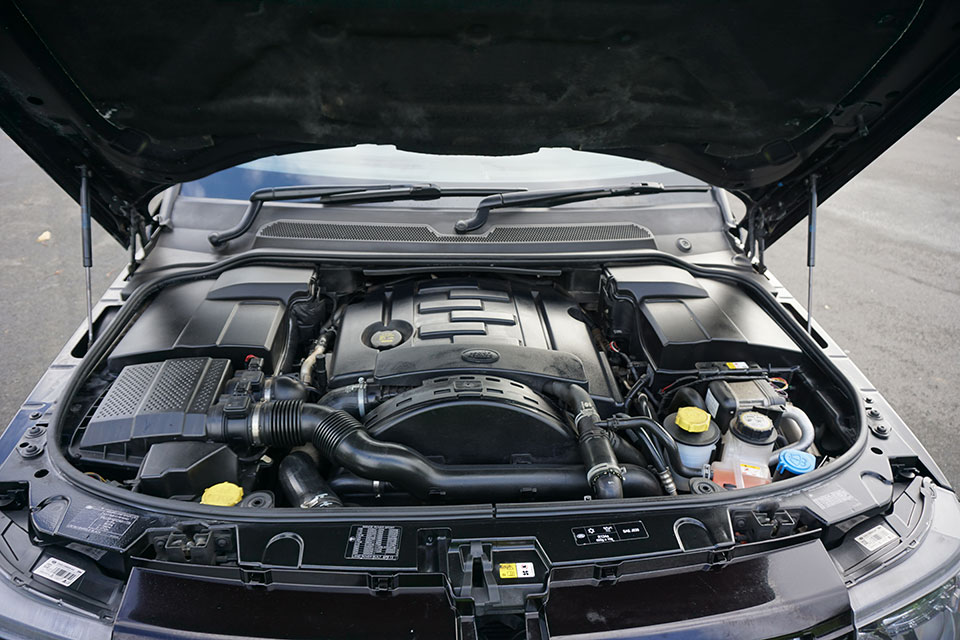Land Rover Range Rover Sport 2004-2013 used car review
The Land Rover Range Rover Sport is a large SUV offering luxury car comfort and decent on-road handling.

The Land Rover Range Rover Sport is a large SUV offering luxury car comfort and decent on-road handling. You may need to make regular visits to the workshop.
The Land Rover Range Rover Sport was launched in 2004 as a smaller, more road-orientated alternative to the full-size Range Rover. Technically, it is more closely related to the Land Rover Discovery, including its chassis, suspension, engines and transmissions. That made the car cheaper to build than other Range Rovers. While presenting a “sports” image, the Sport retains the brand’s legendary off-road ability.
Inside and out
The Sport closely echoes the look of the Range Rover of the time, so much so that the two are easily confused. Although it shares the brand’s signature “clamshell” bonnet, the Sport is significantly smaller and has a more raked rear design. Large air vents sit on the side of the car forward of the front doors. All cars feature large 20-inch wheels, although larger options are common.
Step inside, assisted by a side step, and enter a world of luxury. Most surfaces are covered in high-quality leather, matte-finished wood or aluminium trim. The one exception is the steering wheel which, while rimmed in leather, has a centre and buttons that feel plastic and cheap. Between the gauges is an information screen showing the trip computer, climate control, navigation and off-road system data.
The infotainment screen set into the dash has a unique feature - it can display different things to the driver and passenger at the same time. That allows the passenger to watch television without the driver being able to view it. Below the screen are the controls for the climate control system, which allows different settings for the driver, passenger and rear seat passengers.
There is no traditional transmission shifter - gears are selected using a dial that pops up when the car is started. Behind it are an electric handbrake and the controls for the Terrain Response off-road system and standard air suspension. The console also features a small refrigerator.
The front seats are large and armchair-like. Both have adjustable armrests for added comfort. They are also electrically adjustable, including for lumbar support. Both the front and rear rows are heated. Legroom for back seat passengers is excellent, although taller passengers could find the roof feels slightly low. Window seat space and support are good. While there is room for three adults, the bench is sculpted more for two and any centre seat passenger might find it lumpy.
Specifications for the Sport’s boot list it at a massive 957 litres, although that’s to the roofline. You should be able to fit in four large suitcases and two small ones without loading far above the height of the back seat. That also splits 60/40 and folds down, expanding the space to 2010 litres.
On the road
The Sport has had five different engines over its life. Early cars were offered with 2.7-litre six-cylinder diesel and 4.4-litre eight-cylinder petrol engines. A 3-litre six-cylinder diesel in two power outputs, a 3.6-litre eight-cylinder diesel and a 5-litre supercharged eight-cylinder petrol were added to the range later. Our review vehicle was equipped with the higher-powered 3-litre diesel, also known as the SDV6. Producing 180kW and a huge 600Nm of torque, it is an exceptional engine.
It is quiet and smooth and makes the large, heavy Sport feel very quick. While other Sports use a six-speed automatic transmission, this engine is paired to an eight-speed transmission. The box is smooth, smart and can be shifted manually using paddles mounted on the steering column.
The steering feels nicely weighted and is surprisingly responsive for such a big vehicle. It does not offer much feedback from the road. The ride quality is excellent if a little bouncy over bumps. There is some body roll but the suspension system does a good job of controlling it. The standard Brembo brakes are very effective.
The Sport features all-round independent air suspension as standard. This can be raised up or down for either on-road driving - low - or off-road driving - high. Off-road performance is good but restricted by the road-orientated tyres most Sports are fitted with. The Terrain Response system, controlled by a dial on the centre console, lets you choose modes suited to a range of situations such as snow, grass or rock crawling.
Visibility forward is great, thanks to the high sitting position. To the rear, the standard reversing camera comes in handy. An optional surround camera system allows you to see to the front, side and rear of the car.
The Sport can pull 750kg unbraked, or 3,500kg braked, the weight of a large trailer boat.
Safety
RightCar does not provide a Used Car Safety Rating for the Range Rover Sport; the New Zealand-new models are rated five-stars under the ANCAP system. Standard safety features include electronic stability control, electronic brake force distribution, emergency brake assist and front, side and curtain airbags.
ISOFIX child seat mounts can be found in the second-row window positions. All three seating positions in the rear also get full shoulder belts, which offer more protection than the lap only type.
Reliability
Range Rover Sports have a mixed reputation for reliability. Reports of frequent faults and issues are rife on the internet. In international reliability surveys, the brand is rated one of the worst performers. Most faults relate to electronic “gremlins” and accessories. Most of these items will require a visit to a dealer or specialist to be scanned, sensors reset, cleaned or replaced, and the fault reset, which can be expensive.
The Sport's engines and transmissions are quite reliable and rarely give trouble. The 3-litre diesel uses a timing belt that will need replacing regularly. The eight-cylinder diesel and petrol models use timing chains that do not require replacement.
When you’re shopping, make sure the car can rise and lower when instructed to by using the buttons mounted on the centre console. Replacing the compressor can cost up to $4,000.
There are reports of regular failure with the electric handbrake system. This causes it to freeze when on and refuse to release, stranding the vehicle where it is. The fix is usually simple – it requires sensors in the rear to be blown clean with compressed air in a workshop and reset. Annoying but not necessarily expensive.
Cost of ownership
The Range Rover Sport should be serviced every 12 months or 12,000km. A Land Rover specialist quoted $1,000 for the service, depending on the items that need replacing. On services that include changing fuel and air filters, the cost rises to $1,450. The engine needs its cambelt replaced every 160,000km at a cost from $600.
Diesel-powered Range Rover Sports are surprisingly affordable to fuel considering their size and power. RightCar estimates that over 14,000km of driving a year, our review vehicle will cost $2,740 in fuel and Road User Charges. The 82-litre tank will cost $119 to fill at $1.45 per litre and should take you 836km before the fuel light comes on.
A vehicle licence for the Sport costs $155.69 a year, with the car in the cheapest ACC levy group for diesel vehicles.
Trade Me Insurance estimates insurance for a Discovery valued at $58,570 will cost $81.89* per month.
Buyer's guide
This generation of Range Rover Sport is available on Trade Me priced from $11,000 to $80,000 for later and lower mileage vehicles. Early models offer a lot of luxury for their price, although not without the risk of pricey repairs. A significant proportion of the late-model used cars on the market are imports from the United Kingdom.
Although there are two models of Range Rover Sport, actual final specifications can vary significantly. These are expensive vehicles and buyers will frequently heavily option their cars and choose bespoke interior trims. Special packages offering additional performance or luxury were offered from time to time, including the Signature and Autobiography.
Variants
- SE – Leather seats and steering wheel, electrically adjustable front seats, heated front seats and steering wheel, rain-sensing wipers, automatic headlights, electric rear door, reversing camera, tinted windows, CD changer, touchscreen infotainment system, satellite navigation system, keyless entry and start, separate temperature settings for driver and passenger and 20-inch alloy wheels.
- HSE – Adds a heated rear seat, premium leather, matte-wood trim, television and sunroof.
Timeline
- 2004 Launched globally
- 2007 3.6-litre eight-cylinder diesel engine introduced
- 2009 Cosmetic facelift introduced
- 2009 2.7-litre diesel engine replaced by a 3-litre version
- 2011 Eight-cylinder diesel replaced by higher-power version of 3-litre six-cylinder diesel
- 2013 Replaced by new model
Details
2012 Land Rover Range Rover Sport HSE SDV6
$24,000 to $80,000 for models which have travelled 70,000 to 120,000km
3-litre six-cylinder turbocharged diesel 180kW/600Nm (claimed)
Eight-speed automatic, four-wheel drive
Five-star ANCAP
12,000km or 12 months
Full size wheel
9.2-litres per 100km (claimed)
Diesel
4783mm
1933mm
1816mm
750kg (unbraked), 3500kg (braked)
11.6m
This review covers the Land Rover Range Rover Sport for model years 2004, 2005, 2006, 2007, 2008, 2009, 2010, 2011, 2012 and 2013.
Review vehicle supplied by City Motor Group.
*Our insurance estimates are based on a 35-year-old male with no accidents in the last two years, garaging the car in Mission Bay, Auckland. The car is not used for business and will cover 10,000km to 20,000km a year. We estimate with no option add-ons and $500 excess. Customise your estimate at Trade Me Insurance.
Image gallery
Also consider






